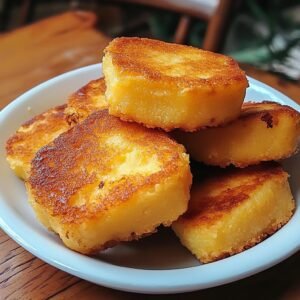
There’s something deeply comforting and undeniably nostalgic about a perfectly baked meatloaf. This recipe for “The Best Classic Meatloaf” lives up to its name, delivering a moist, flavorful, and deeply satisfying dish that’s a true cornerstone of home cooking. With simple ingredients and straightforward steps, it creates a hearty main course that’s perfect for a cozy family dinner and guaranteed to become a cherished recipe in your repertoire. The savory glaze adds that irresistible finishing touch, balancing richness with a tangy sweetness.
Why I Love This Recipe
This meatloaf recipe holds a special place in my heart because it embodies everything great about classic comfort food. I love how it’s incredibly adaptable, allowing for subtle personal touches while still maintaining that beloved, familiar flavor. The combination of moist ground beef with aromatic onion, classic seasonings, and a simple binding agent creates a texture that’s tender, not dry. And the glaze? That’s the secret weapon! Its tangy, sweet, and slightly spicy kick perfectly complements the savory meatloaf, creating an irresistible crust that makes every slice a delight. It’s a no-fuss meal that always feels like a warm hug on a plate.
List of Ingredients
Here’s what you’ll need to create “The Best Classic Meatloaf”:
For the Meatloaf:
- 1 ½ pounds ground beef (preferably 85% lean for good flavor and moisture)
- 1 cup seasoned breadcrumbs (Italian-style are excellent)
- 1 medium onion, finely chopped
- 1 large egg, lightly beaten
- 1/2 cup milk (whole or 2%)
- 1/4 cup ketchup (for the internal mixture)
- 1 tablespoon Worcestershire sauce
- 1 teaspoon salt (or to taste)
- 1/2 teaspoon black pepper (or to taste)
For the Glaze:
- 1/2 cup ketchup
- 1 tablespoon apple cider vinegar (or white vinegar)
- 1 tablespoon brown sugar (packed)
- 1/4 teaspoon salt
- 1/4 teaspoon black pepper
- 1/4 teaspoon red pepper flakes (optional, for a subtle kick)
Swaps and Notes
- Ground Beef: While ground beef is traditional, you can use a mix of ground beef and ground pork for added richness and moisture, or ground turkey for a leaner option. If using very lean meat, you might need a bit more milk or ketchup to ensure moisture.
- Breadcrumbs: Seasoned breadcrumbs add extra flavor. If you only have plain, add a teaspoon of dried Italian seasoning, garlic powder, and onion powder to them. For a gluten-free option, use gluten-free breadcrumbs or crushed gluten-free crackers.
- Onion: Finely chopped onion is key for even distribution and flavor. If you’re sensitive to onion texture, you can finely grate it or even sauté it briefly before adding to the mix.
- Egg & Milk: These act as binders and add moisture. Don’t omit them.
- Ketchup (internal): Adds a touch of sweetness and acidity to the meatloaf itself.
- Worcestershire Sauce: Essential for that deep, savory, umami flavor.
- Glaze Sweetness/Heat: Adjust the brown sugar for more sweetness and the red pepper flakes for more heat in the glaze to suit your preference. A dash of smoked paprika can also add depth to the glaze.
- Salt and Pepper: Always taste and adjust seasoning, especially for the meatloaf mixture and the final glaze.
List of Steps for the Recipe
1. Prepare the Meatloaf Mixture:
- In a large mixing bowl, combine the 1 ½ pounds ground beef, 1 cup seasoned breadcrumbs, 1 finely chopped onion, 1 lightly beaten egg, 1/2 cup milk, 1/4 cup ketchup, 1 tablespoon Worcestershire sauce, 1 teaspoon salt, and 1/2 teaspoon black pepper.
- Using clean hands, gently mix all the ingredients until they are just combined. Be careful not to overmix the meat, as this can make the meatloaf tough. Mix until everything is evenly distributed.
2. Shape and Bake the Meatloaf:
- Lightly grease a loaf pan (a 9×5-inch pan is standard).
- Transfer the meat mixture to the prepared loaf pan. Gently shape it into an even loaf, pressing it firmly enough to remove air pockets but not compacting it too much. You can also shape it into a free-form loaf on a foil-lined baking sheet if you prefer a crispier exterior.
- Preheat your oven to 350∘F (175∘C).
- Place the loaf pan (or baking sheet with free-form loaf) into the preheated oven.
- Bake for 1 hour. Baking time can vary depending on your oven and the thickness of your loaf; it might take a bit longer. The internal temperature should reach 160∘F (71∘C) before applying glaze.
3. Prepare the Glaze:
- While the meatloaf is baking, prepare the glaze. In a small bowl, whisk together the 1/2 cup ketchup, 1 tablespoon apple cider vinegar, 1 tablespoon packed brown sugar, 1/4 teaspoon salt, 1/4 teaspoon black pepper, and 1/4 teaspoon red pepper flakes (if using). Stir until the sugar is dissolved and all ingredients are well combined.
4. Glaze and Finish Baking:
- After the meatloaf has baked for 1 hour (or when its internal temperature is close to 160∘F (71∘C)), carefully remove it from the oven.
- Evenly spread the prepared glaze over the top of the meatloaf.
- Return the meatloaf to the oven and continue to bake for another 10-15 minutes, or until the glaze is bubbly and slightly caramelized, and the internal temperature of the meatloaf reaches 160∘F (71∘C) when measured with a meat thermometer inserted into the thickest part.
5. Rest and Serve:
- Once baked, remove the meatloaf from the oven.
- Let the meatloaf rest in the pan for 5-10 minutes before slicing. This allows the juices to redistribute, ensuring a moist and flavorful slice.
- Drain any excess fat from the pan if desired before slicing and serving.
Tips for Success
- Don’t Overmix: Overmixing the ground beef mixture can lead to a dense, tough meatloaf. Mix just until combined.
- Use a Loaf Pan: A loaf pan helps the meatloaf hold its shape and keeps it incredibly moist by containing the juices. If you prefer a crispier crust, form it into a free-form loaf on a baking sheet.
- Monitor Internal Temperature: The best way to know if your meatloaf is done is by using a meat thermometer. For ground beef, the safe internal temperature is 160∘F (71∘C).
- Resting Time: Don’t skip the resting step! It’s crucial for a moist meatloaf.
- Drain Excess Fat: If baking in a loaf pan, there might be excess fat accumulated at the bottom. You can carefully drain this off before serving.
- Customize Your Glaze: The glaze recipe is a perfect starting point. Feel free to adjust the sweetness (more brown sugar), tang (more vinegar), or heat (more red pepper flakes) to your liking. A touch of dry mustard or garlic powder can also be added.
Serving Suggestions and Pairings
Meatloaf is the ultimate comfort food and pairs wonderfully with classic side dishes:
- Mashed Potatoes: The quintessential pairing! Creamy mashed potatoes are perfect for soaking up any extra gravy.
- Roasted Vegetables: Roasted carrots, green beans, or Brussels sprouts offer a balanced and nutritious side.
- Corn: Creamed corn or simple corn on the cob provides a touch of sweetness.
- Dinner Rolls: Soft dinner rolls are great for wiping up every last bit of gravy.
- Green Salad: A simple side salad with a light vinaigrette can provide a refreshing contrast.
- Wine Pairing: A medium-bodied red wine like a Cabernet Sauvignon, Merlot, or Zinfandel would complement the rich beef flavors.
- Beer Pairing: A hearty amber ale or a brown ale would also be an excellent choice.
Nutritional Information
(Approximation per serving, based on 6 servings. Values can vary significantly based on beef lean percentage, breadcrumb type, and exact amounts of ingredients.)
- Calories: Approximately 350-450 kcal
- Protein: Approximately 30-35 g
- Fat: Approximately 15-25 g (depends on beef lean percentage)
- Carbohydrates: Approximately 20-30 g
- Fiber: Approximately 1-2 g
- Sodium: Approximately 600-900 mg (can be reduced by using low-sodium broth/ingredients and controlling added salt)
- Cholesterol: Approximately 90-110 mg
Note: These values are estimates. For precise nutritional information, it’s recommended to use a nutritional calculator with your specific ingredients and exact portion sizes.
Storage and Leftover Tips
- Refrigeration: Leftover meatloaf stores beautifully. Transfer cooled meatloaf to an airtight container and refrigerate for 3-4 days.
- Reheating:
- Oven: For best results, reheat slices in an oven preheated to 300∘F (150∘C) until warmed through, about 15-20 minutes, loosely covered with foil to prevent drying.
- Microwave: Individual slices can be microwaved, but be careful not to overheat, which can dry out the meat. Heat in 30-second intervals until warmed through.
- Freezing: Meatloaf freezes exceptionally well, both cooked or uncooked.
- Cooked: Allow to cool completely, then slice or freeze as a whole loaf. Wrap tightly in plastic wrap, then foil, and freeze for up to 3 months. Thaw overnight in the refrigerator before reheating.
- Uncooked: Prepare the loaf mixture and shape it. Wrap tightly and freeze for up to 3 months. Thaw overnight in the refrigerator before baking as directed.
- Leftover Ideas: Meatloaf sandwiches (hot or cold!), crumbled over pasta with marinara, or as a topping for baked potatoes.
Final Thoughts
“The Best Classic Meatloaf” recipe is a testament to the enduring appeal of simple, hearty home cooking. It’s a dish that brings comfort, flavor, and satisfaction to any meal, proving that sometimes, the classics truly are the best. Easy to make and even easier to love, this meatloaf is sure to become a beloved staple in your family’s rotation.
We’d love to hear how “The Best Meatloaf” turned out for you! Share your experiences or favorite ways to serve it in the comments below. Don’t forget to follow us for more delicious and comforting recipes!




Leave a Reply